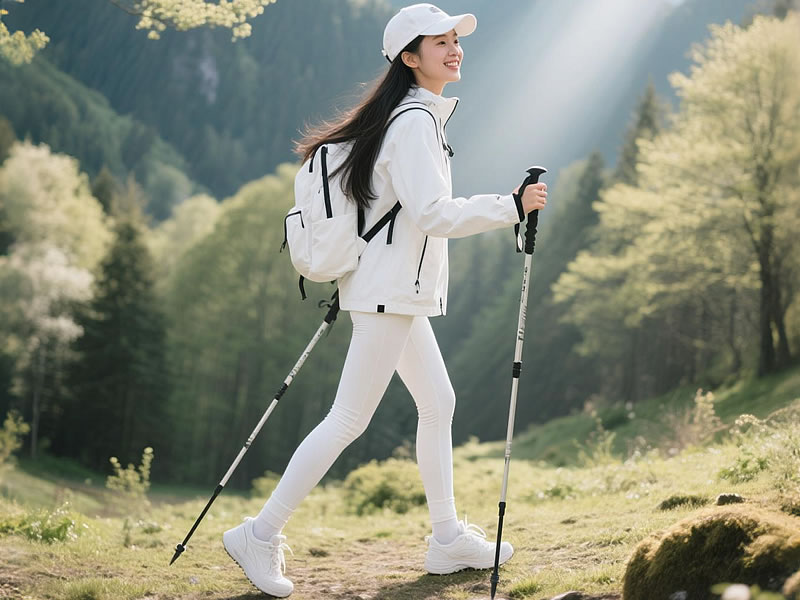Essential lightweight safety gear for solo hikers
Solo hiking offers unmatched freedom, but it also demands self-reliance. Cutting weight shouldn’t mean cutting corners on safety—especially when you’re alone. From navigation to emergency shelter, here’s a curated list of lightweight, non-negotiable safety gear that balances minimalism with preparedness.

1. Navigation: Never Lose Your Way
- GPS/SOS Device:The Garmin inReach Mini 2 (3.5 oz/100g) provides global satellite messaging, SOS alerts, and route tracking. Pair it with the Earthmate app for offline maps.Budget Alternative: Download offline maps on your phone (e.g., Gaia GPS) and carry a paper map/compass (2 oz).
- Backup Power:A 10,000mAh ultralight power bank (6 oz/170g) ensures devices stay charged for multi-day trips.
Pro Tip: Share your itinerary with a trusted contact and schedule check-ins via your GPS device.
2. First Aid: Compact but Comprehensive
A solo hiker’s first-aid kit must address worst-case scenarios:
- Essentials:Blister care (leukotape, moleskin).Tourniquet (e.g., CAT Gen 7, 3 oz).Antiseptic wipes, gauze, and止血粉 (for heavy bleeding).Medications (pain relievers, antihistamines).
- Ultralight Kit:Repackage supplies into a ziplock bag (1–2 oz total). Add an emergency blanket (1.5 oz) for hypothermia prevention.
Avoid: Bulky pre-assembled kits—customize based on your medical needs.
3. Emergency Shelter: Stay Dry and Warm
Even on day hikes, unexpected overnight stays happen:
- Emergency Bivvy: The SOL Escape Lite (5 oz/142g) reflects 90% of body heat and fits in a pocket.
- Ultralight Tarp: A DCF tarp (8–10 oz) paired with a groundsheet provides modular shelter in storms.
Rule: Always carry one of these, even if your main shelter is miles away at camp.
4. Light and Communication: See and Be Seen
- Headlamp: The Petzl Actik Core (3 oz/85g) offers 450 lumens and USB rechargeability. Always pack extra batteries.
- Whistle: Attach a Fox 40 Classic (0.3 oz) to your pack—it’s louder than shouting and works when devices fail.
- Signal Mirror: A 2x3-inch acrylic mirror (0.5 oz) can alert rescuers or passing aircraft.
5. Water Safety: Prevent Dehydration and Illness
- Water Filter: The Sawyer Squeeze (3 oz/85g) filters 100,000+ gallons. Pair with a CNOC Vecto bladder for easy filling.
- Backup Purification: Aquatabs (0.1 oz per tablet) treat 1 liter in 30 minutes if your filter fails.
Critical: Test filters pre-hike and know nearby water sources via apps like Guthook.
6. Fire and Tools: Small but Mighty
- Firestarter: Waterproof matches + Light My Fire Ferro Rod (1 oz) for emergencies.
- Multitool: The Leatherman Skeletool CX (5 oz) combines pliers, a knife, and a screwdriver.
- Repair Kit: Tenacious Tape, duct tape (wrap around a trekking pole), and a sewing needle.
7. Visibility and Wildlife Safety
- Bright Clothing: Wear high-vis colors (orange, neon yellow) to aid rescue teams.
- Bear Spray: In bear country, carry UDAP 7.9 oz (14 oz total)—non-negotiable for solo hikers.
- Odor-Proof Bags: Store food in Opsak bags to avoid attracting wildlife.
Weight vs. Safety: A Solo Hiker’s Balancing Act
| Category | Ultralight Choice | Weight | Traditional Alternative | Weight |
|---|---|---|---|---|
| Shelter | SOL Bivvy | 5 oz | 2-person tent | 48 oz |
| Water Filter | Sawyer Squeeze | 3 oz | Pump filter | 14 oz |
| First Aid | Custom Ziplock Kit | 2 oz | Pre-made kit | 10 oz |
Total Ultralight Safety Gear: ~20 oz (1.25 lbs) vs. Traditional 72 oz (4.5 lbs).
Common Mistakes to Avoid
- Overconfidence: “I’m only going 5 miles” isn’t an excuse to skip gear.
- Ignoring Weather: A 50°F forecast can plummet to freezing at night.
- Poor Redundancy: Two light sources (headlamp + phone light) are better than one.
Case Study: When Lightweight Gear Saved a Solo Hike
Emily, 32, sprained her ankle 8 miles from the trailhead during a solo trek in the Rockies:
- Gear Used: Garmin inReach SOS, emergency bivvy, and ibuprofen from her kit.
- Outcome: Rescued within 6 hours with no hypothermia thanks to her 5 oz bivvy.
- Lesson: Ultralight safety gear works—if you carry it.
Final Checklist Before Hitting the Trail
- ☑ Test all gear (filter, GPS, headlamp) 48 hours prior.
- ☑ Share your route, ETA, and emergency contacts.
- ☑ Pack “what if” items: extra food (200+ calories), a physical map, and a whistle.
Conclusion: Safety Isn’t Heavy—It’s Essential
Solo hiking rewards preparation. By choosing smart, lightweight safety gear and honing your risk-assessment skills, you can embrace solitude without vulnerability. Remember: The wilderness doesn’t care about your pace or pack weight, but it does demand respect.






